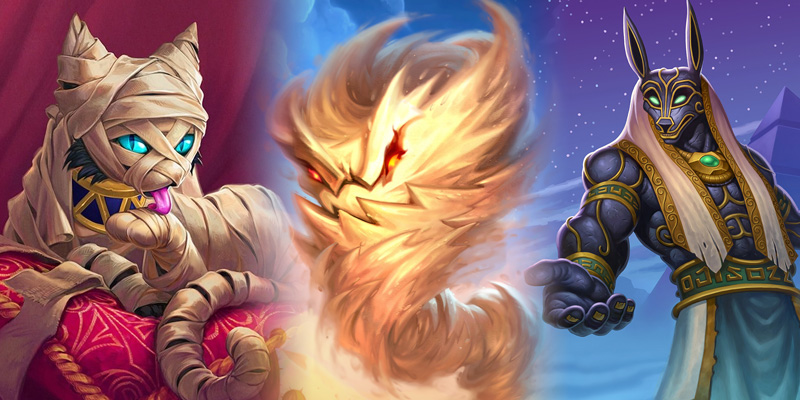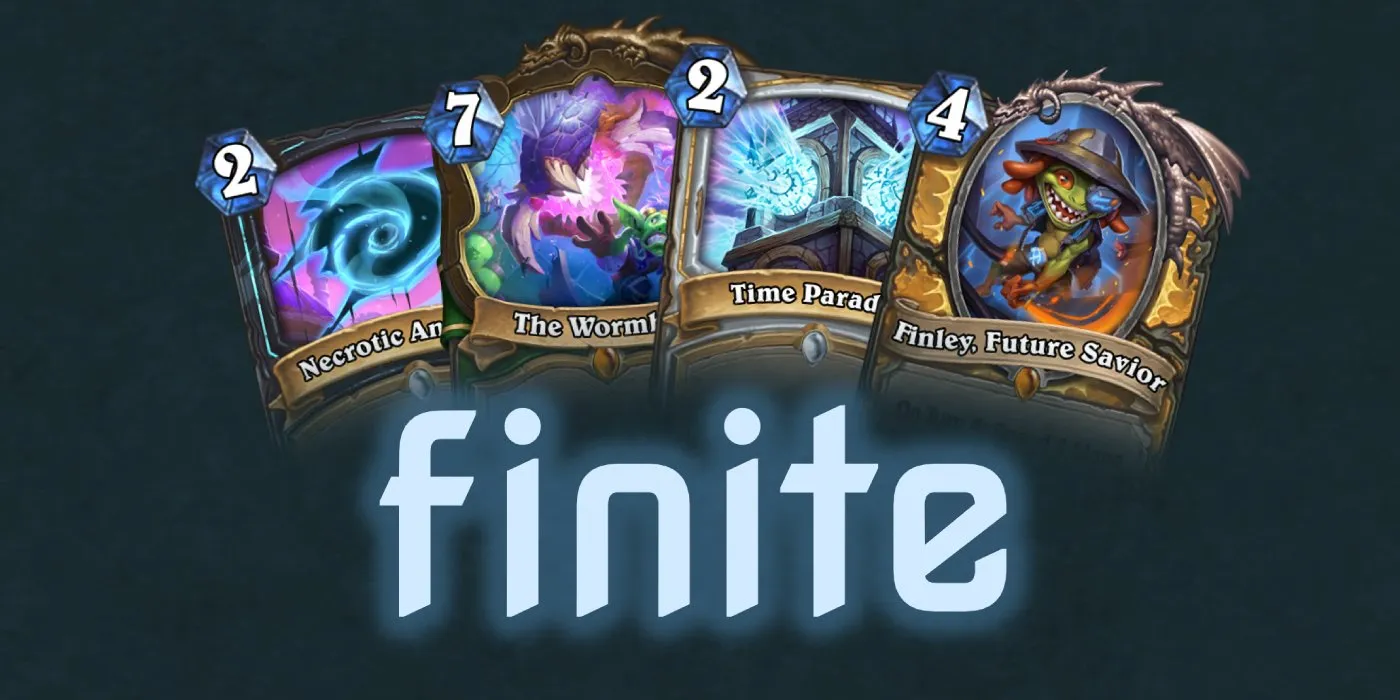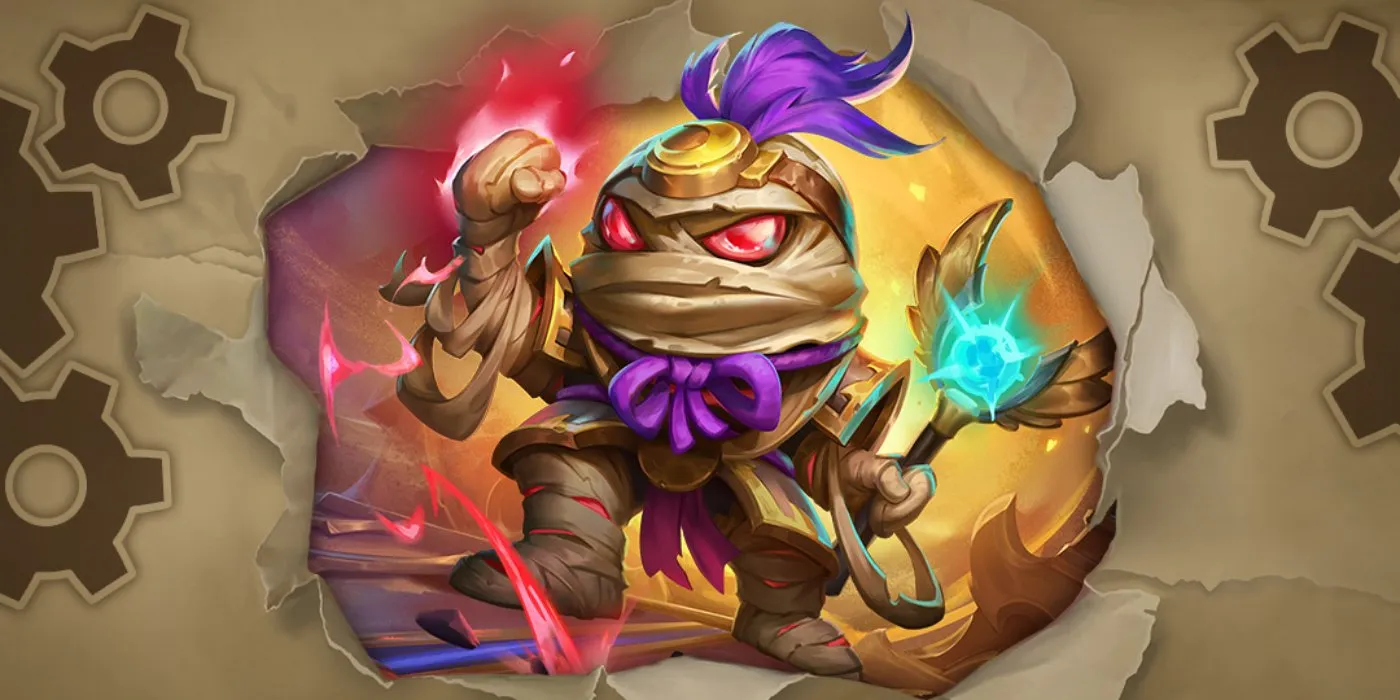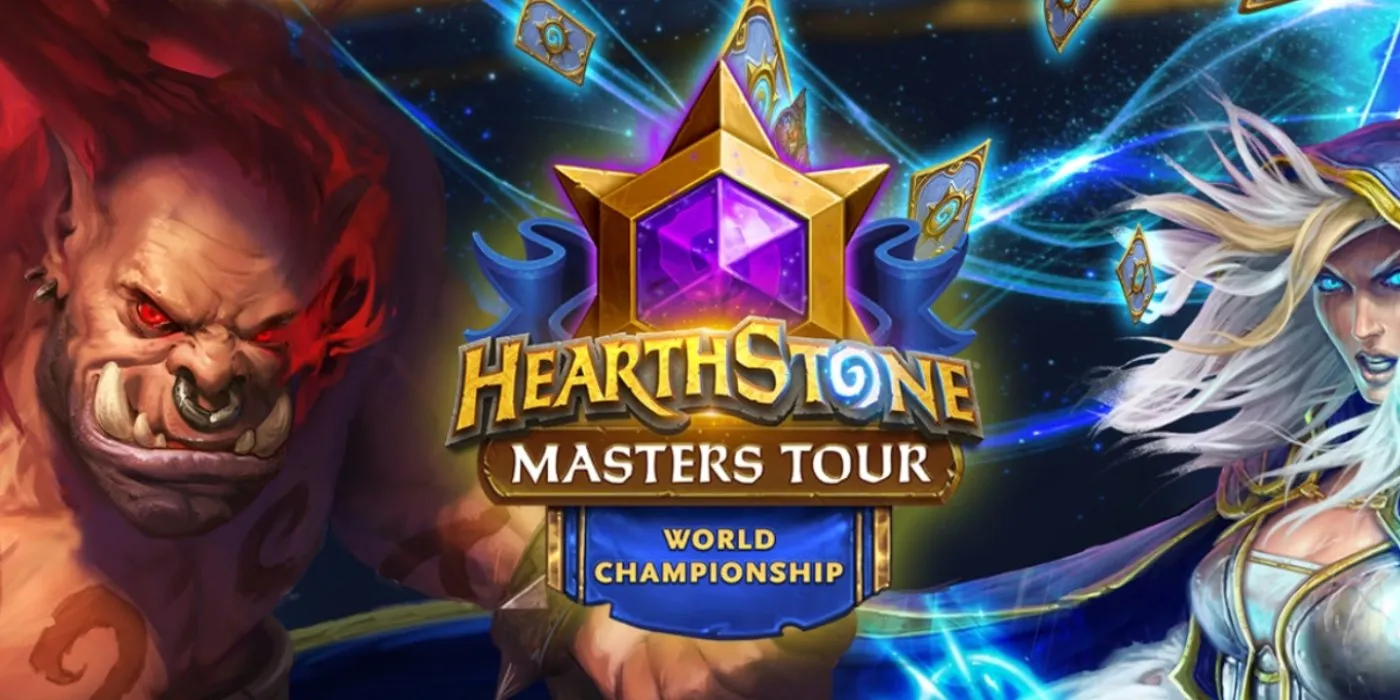What is Rock, Paper, Scissors?
Rock beats Scissors, Scissors beats Paper, Paper beats Rock.
Historically, all Hearthstone decks can be broken into 3 primary archetypes: Aggro (Rock), Control (Paper), and Combo (Scissors) decks. These overarching deck categories cover pretty much every deck that we have seen rise to popularity in each meta. In each metagame, Hearthstone decks of each type act as counterbalances to one another. My goal each week is to bring you a deck from each archetype that is performing at the top of the Standard Ranked meta with a brief overview, decklist, and how to beat these decks. The rule of Rock, Paper, Scissors defines which matchups are favorable and which are not, however, any deck can win any game if you play to your outs and understand your best chance to win a game.
I received some feedback that some believe I incorrectly assigned the archetypes to Rock, Paper, and Scissors; whichever way you interpret them is fine by me. I will be sticking to the original descriptions for consistency's sake. However, I added a bit more clarification below to each archetype and hope this helps.
Goals of Each Type
Rock (Aggro) - Think "me rock, me smash!". Defeat your opponent with early minion damage, board presence, and direct damage via minions or spells from hand.
Paper (Control) - Your goal is to cover your opponent so they can't do anything. Defeat your opponent by running them out of resources; health, minions, spells are all resources.
Scissors (Combo) - The term "1000 tiny cuts" comes to mind, after all the cuts your opponent realizes they have been beat. Defeat your opponent by playing cards which combine to create powerful effects for One-Turn-Kills or massive board-swings in single turns.
Weekly Overview
The metagame has settled into a more solid state with Highlander Hunter, Control Warrior, and Big Spells/Highlander Mage coming to define the meta. This solidification of powerful decks to counter and beat has resulted in a few decks popping up to take advantage of relatively slower decks by beating them quickly. This week's "Rock, Paper, Scissors" features the 3 decks that have popped up to beat the popular decks. We feature an Aggressive Rogue deck, Discover Spells Quest Shaman, and a classic Combo Priest.
Rock - Aggro
The term SMOrc comes to mind when I think of aggro (https://www.youtube.com/watch?v=-jenlSf2E8o)
Aggro is viewed as the most straightforward of the deck types for a beginner to understand and play. Your goal is to kill your opponent before they have a chance to stabilize the board, keep their life total outside your damage from hand, and you run out of cards to play. Your goal with an aggressive deck is always to balance how much damage you are dealing to your opponent each turn and fight for control of the board at each stage. Aggro thrives against Combo decks which sacrifice board presence, removal, and healing in order to play powerful combinations of cards that can win them the game. Aggro suffers against Control which focuses on removing all of your minions, healing, and generating value so they have more resources at the end of the game.
Featured Deck of the Week: Aggro Weapon Rogue
How to Play It
[Hearthstone Card (This deck feels incredibly similar to the Tempo Rogue that became so dominant that it was nerfed during Rise of Shadows. The deck centers around two incredibly powerful weapons: Hooked Scimitar and Waggle Pick, toss in a free 3/3 in Dread Corsair and it can feel game-breaking. Both of these 4 attack weapons can account for massive damage against decks without taunts or extensive healing. The new 1-drop Pharaoh Cat is incredibly powerful, adding value to your hand. The cherry-on-top for this deck is Myra's Unstable Element which can also make Zephrys the Great playable for lethal. Your goal is to find lethal by turn 7 or 8 and more often than not it comes easy.
How to Beat It
This deck alone makes a compelling argument for players to continue playing Control Warrior. The biggest weakness of the deck is when the other deck stabilizes around turn 7 and it doesn't have lethal damage in hand. Because of how much damage is done by weapons, spells, and charge minions; along with a well timed Sap, it can feel like regardless of the board state, it kills you. Mage, Priest, and Highlander Hunter are all ideal matchups for this deck. Any deck which lacks extensive healing, taunts, and weapon removal is in for trouble. Consider adding weapon removal or small taunt minions if this matchup is continually beating you.
Paper - Control
Control is challenging because it takes practice to know what threats to expect from your opponent. The more knowledge you have of your opponent, the better you will perform. Control, typically, has a finite number of removal tools for individual minions and board clears. When playing this archetype each turn you have to ask yourself a few questions: Do I need to remove this minion/board right now? How can I stabilize this board to keep it from getting out of control? How do I prevent lethal damage from my opponents hand? By answering each of these questions, you learn when to clear a board and when to leave it, when you should be playing a taunt minion, and when you absolutely need to heal. Your end goal is how/when to stabilize and take full control of the game so your opponent cannot get back into the game. Control thrives against Aggro because eventually all Aggro decks run out of cards in hand or cards in their deck; meaning that if you can keep the board, they will run out of steam and lose. Control suffers against Combo because it often lacks proactive plays to deal damage to the opponent, allowing Combo to play their combo pieces whenever they want.
Featured Deck of the Week: Quest Shaman
How to Play It
Ok, so this may not considered a traditional control deck. However, I believe it merits the archetype of control for the current meta. If you have ever played against this deck you may have encountered a similar scenario to me: I have about 3 cards in hand and the Shaman has 9 or 10 every single turn. The sheer volume of resources generated by completing Corrupt the Waters gives the deck a true control feel to me. The strategy is to complete the quest as quickly as possible, then answer your opponent with a myriad of double-battlecries, discovered spells, lackeys, and armies of Annoy-o-Tron via Giggling Inventor. Eventually you will find yourself with lethal damage via damage dealing-battlecries, don't forget that if you start with the coin you can do double Shudderwock against Warrior.
How to Beat It
This deck can sometimes get off to a slow start, this will allow you to overwhelm them with tempo. Decks like Big-Spell Mage can generate boards that the Shaman struggles to answer, but watch out for Mind Control Tech. Decks like Combo Priest which can stack giant minions and deal damage early will be quite successful against the Quest Shaman as well. Be sure to get on the board and limit the lackey generation or it will be incredibly easy for the Shaman to find the answer they need to stay in control of the game until you fall into lethal range.
Scissors - Combo
Combo is sometimes classified more as a game of solitaire than a game of Hearthstone. Historically, combo decks are assembled in a way that once you complete each step, you win the game with a lethal in one turn, known as a One-Turn-Kill (OTK) deck. However, the current state of Hearthstone has very few decks which are capable of this. Most combo decks execute a series of plays to set up incredibly powerful boards by cheating out discounted cards or an infinite source of large minions (think Pogohopper Rogue and Conjurers Calling Mage). Combo decks thrive against control because the control deck often does little to nothing to threaten lethal against you. Combo suffers against aggro because by running combo cards, you sacrifice removal and healing; allowing aggro to beat you before you complete the combo. Once a combo deck has played it's combo cards, it is almost unstoppable.
Featured Deck of the Week: Combo Priest
How to Play It
Currently the highest winrate deck at legend is Combo Priest. This deck relies on the omnipresent Inner Fire + Divine Spirit combo to deal lethal damage as early as turn 5 if both copies of Divine Spirit are drawn. The results of early experimentation with the Priest Quest resulted in a midrange deck capable of massive amounts of damage and the biggest boards of 20-health minions you've ever seen. The deck relies on a constant board presence and a bit on lucky draws. The addition of Psychopomp, Injured Tol'vir, and Neferset Ritualist with the latest expansion really drive the high health and healing power for combos. If you can stick High Priest Amet, this deck feels unstoppable as you summon lots of low cost minions with high health early in the game. A 7-health minion on turn 4 becomes a serious problem immediately. The deck stays true to being a Combo deck, but due to the reliance on draws of Divine Spirit it can take a number of turns to find the combo and it is less consistent.
How to Beat It
If this deck loses the board, it loses the game. If this deck sticks any big health minion, it wins the game. Its that simple, really. Psychopomp is the exception to that rule: nothing feels worse than killing a Injured Tol'vir or Injured Blademaster, just to have it come right back with an OTK-ready vengeance. Your best bet to beat Combo Priest is the Aggro Rogue featured earlier today. Sap will ruin a Priest's day and has since Alpha. If you're not an aggro deck then your other go-tos are Silence cards which can help you stop a buffed minion or taunts prior to killing their board with a clear. If this deck doesn't draw into its crazy combos, it cannot win the game; limit the card draw of the Priest as much as you can to stand a chance.
I hope you have enjoyed this week's edition of Rock, Paper, Scissors. Tune in next week for another 3 competitive decks of each archetype.
Have you encountered these decks or played them? Tell us about your experiences and share your thoughts below!
) Not Found]



Comments
The Rock, Paper Scissor analogy still holds and is probably enrooted in HS foundations.
Did you guys knew that Ben Brode used to compete in Rock, Paper, Scissor tournament?
As everyone else has said, great content as usual. I especially like the general descriptions on not only how to play the deck but how to beat it as well. To me, the hardest part of a new deck is figuring out the proper mulligans and strategies. While some are obvious, others are not.
Further, I want to give a shout out to the combo priest outlined. I found it a few days before this was published and run a slightly different list (I run Leroy), and it has been absolutely crazy. It's so fun to play (even when getting screwed from draws sometimes) and has brought me from Rank 7 to Rank 3. I hope to use it to reach legend for the first time. It is strong against pretty much every deck, especially against Quest decks and Luna's Mage. Oddly, I have only had two mirrors, so the deck is still flying under the radar. In short, I recommend that you play it before the balance changes come in the coming weeks (suspected targets for nerfs are More Arms and Divine Spirit among others). You won't regret it.
Me to, Me to!!!
As has been stated, the content coming from this team is great. Please keep it up. I am very pleased to be a supporter of this site.
A good read, again. Well done and love the way you've written it :).
Just wanted to add in my agreement to the general praise of the content team!
Very well done, always a good read.
amazing content, as usual!
The content is def a lot better than what Hearthpwn is providing right now. This site will continue to grow more and more because of its quality. Great job!
Not only that. The quality of the content is really nice work. Thanks for the hard work!
The content team is really doing awesome work! It's great to hear the positive feedback each time a new article gets published. Very impressive stuff. :)
Just wanted to say I really appreciate how often this website is updated with new articles.
Gives me lots of excuses to procrastinate :)
Totally agree
Same here !! :-)